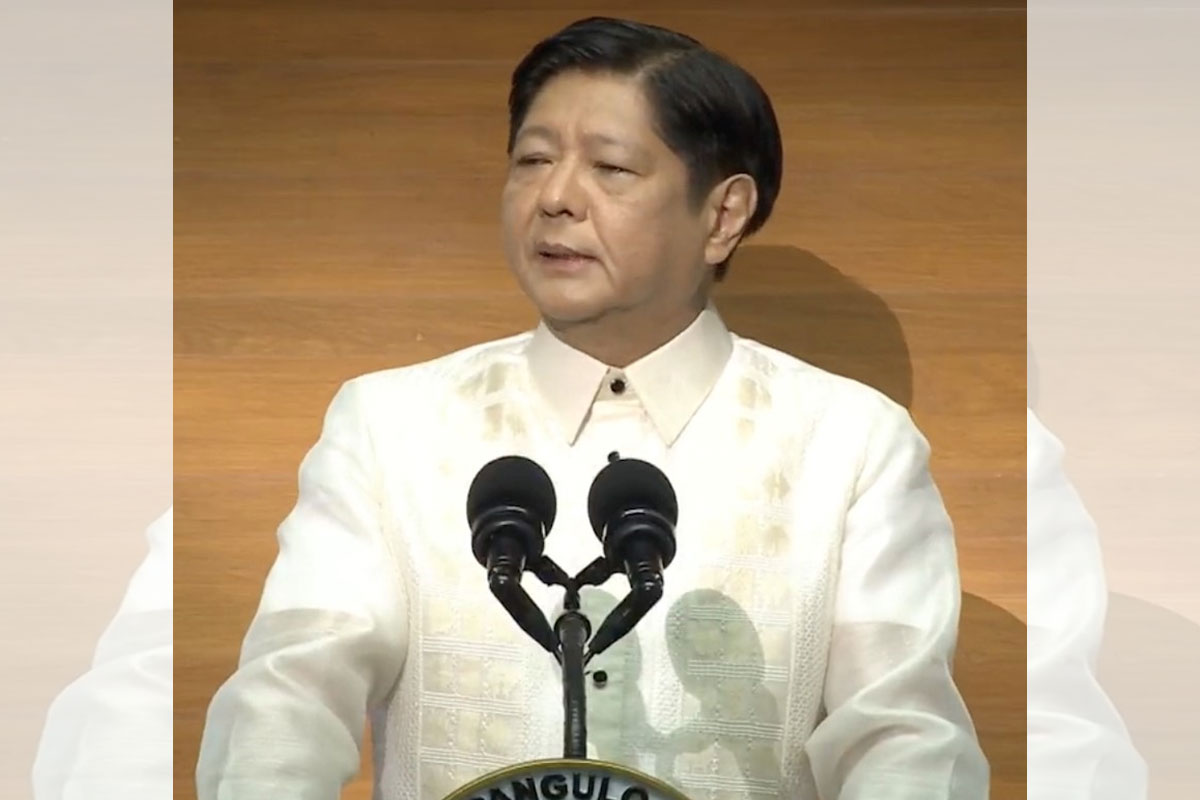 Camarines Sir Rep. LRay Villafuerte
Camarines Sir Rep. LRay Villafuerte
Villafuerte: EO 62 to lead to rice price drop to below P30 a kilo
CAMARINES Sir Rep. LRay Villafuerte has welcomed a new Malacañan Palace order that officially slashed import tariffs on rice, in a move, which, he said will set in motion President Marcos’ goal to pull down eventually the retail cost of this staple to below P30 per kilo.
“The recent issuance by the President of EO (Executive Order No.) 62 that modified the multi-year and comprehensive tariff schedule on imports until 2028 is certainly a welcome development,” said the CamSur congressman, “as the modified rates include the reduction of customs duties on rice from 35% to just 15%, which our economic managers project to later on bring down the market price of the staple to below P30 a kilo,” Villafuerte, National Unity Party (NUP) president, said.
Villafuerte also supported the provision in EO 62 that subjects the reduced rates to a review every four months, saying “this would give flexibility to the government to adjust the customs duties if and when necessary, subject to existing market conditions.”
President Marcos issued EO 62 last June 20, or just weeks after the National Economic and Development Authority (NEDA) Board, which he chairs, approved on June 3 the rice tariff rate cut as part of the modified comprehensive customs duties for most commodities from now till end-December 2028.
Villafuerte at the same time appealed to certain farmers’ groups that are set to file a temporary restraining order (TRO) against EO 62 to “reconsider and give up their planned legal action, considering that agricultural workers will benefit, too, from cheaper rice as they themselves are main consumers of this staple.”
Twelve groups, including Samahang Industriya ng Agrikultura (SINAG), bared plans last weekend to file a TRO before the Supreme Court to prevent EO 62 from becoming effective on July 6.
Villafuerte noted, though, that, “The unhampered implementation of EO 62 will get going the process for rice prices to go down below P30 a kilo, at least to poor and low-income consumers, as projected by our economic managers.”
And once the Congress writes a proposed law amending Republic Act (RA) No. 11203 or the Rice Tariffication Law (RTL), he said that rice prices are then expected to even go down further.
“With rice accounting for a sizable share of the food expenses of Filipinos, most especially of poor or low-income families, the tariff rate cut under EO 62 and an amendatory law to RA 11203 to restore certain regulatory and trading powers of the NFA (National Food Authority) to intervene in the market, will make the staple more affordable and accessible for our consumers—and help take the edge off sticky inflation,” he said.
Without the RTL amendments yet, the lower tariff alone on imported rice is projected to cut rice prices by P6 to P7 a kilo, said Agriculture assistant secretary Arnel de Mesa.
De Mesa said EO 62 will take effect on July 6, or just in time for rice shipments set to arrive in the country in July or August to be subjected to the lower tariffs.
Following a meeting this week with rice traders belonging to the Philippine Rice Industry Stakeholders Movement (PRISM) and Grain Retailers Confederation of the Philippines (GRECON), Speaker Martin Romualdez said he was told by these businessmen that with the lower tariffs on imported rice, the retail cost of the staple would go down by July or August to P45 to P46 per kilo for well-milled rice (WMR) and P47 to P48 for premium rice.
With EO 62 in play, Villafuerte said, “The retail cost of rice is likely to go down further to P30 a kilo or lower in case our senators consider passing the complementary House-approved HB (House Bill No.) 10381 amending the RTL by letting the NFA import rice again or buy the harvests of local farmers, so it can effectively intervene in the market by selling cheaper rice, particularly to poor or low-income consumers, whenever domestic prices are unusually high.”
The House passed HB 10381 on third and final reading, by a 231-3 vote with one abstention, before the 19th Congress adjourned sine die on May 25.
Villafuerte, who co-authored both RA 11203 and HB 10381, earlier appealed to senators to act on their version of the proposed amendatory law to the RTL when the Congress reopens next month for its third and final legislative session.
“Because the NFA is no longer allowed legally to acquire a critical volume of rice, it has no capability right now to directly and actively intervene in the local market whenever retail costs are high because it does not have enough stocks in its warehouses at any given time to be able to influence, much less dictate, prices in the domestic market,” he said.
“Hence, the need for the 19th Congress to write new legislation on RTL amendments to empower the NFA during emergency situations to beef up its stocks, through imports or local purchases, as a way to sell a lot more rice and hopefully stave off undue price spirals in the grain,” he added.
Villafuerte said that as stressed by Speaker Romualdez, the RTL amendments are meant to stabilize rice prices by reducing the influence of unregulated rice imports and curbing the ability of middlemen or grain traders to unduly pad the retail prices of the staple.
Philippine Statistics Authority (PSA) data showed that, as of May 1, rice stocks held by the commercial sector totaled 1,142 metric tons (MT) while households accounted for 863.77 MT, and NFA depositories had 69.35 MT.
In EO 62, President Marcos explained that, ‘The implementation of an updated comprehensive tariff schedule aims to augment supply, manage prices, and temper inflationary pressure of various commodities, consistent with the Philippine national interest and the objective of safeguarding the purchasing power of Filipinos.”
The salient features of EO 62 are the maintenance of the current Most Favored Nation (MFN) tariff rates ranging from 0% to 65% on various agriculture and industrial products; and the reduced rates on other goods, such as rice, whose in-quota and out-quota rates were cut from 35% to 15%.
At a Malacañan Palace briefing following the NEDA Board decision on the rice tariff cut, Socioeconomic Planning Secretary Arsenio Balisacan said the approved reduction would bring down the price of rice to P29 a kilo.
“The Department of Agriculture (DA) is aiming for a reduction (to) P29 per kilo, at least for the poor, because we will complement this tariff reduction with the direct subsidies to the poor and vulnerable so that at least they could access the food,” Balisacan said.
According to the DA price watch Bantay Presyo, WMR prices in public markets stood at P51.46 to P53.50 per kilo, as of mid-June, while regular milled rice (RMR) prices were at P48.88 to P49.85 per kilo.
Earlier, Villafuerte said he was bullish on the Senate’s approval of its version of HB 10381, following the disclosure of Romualdez that House and Senate leaders were close to reaching an agreement on the proposed overhaul of the RTL.
RA 11203 created an annual P10-billion Rice Competitiveness Enhancement Fund (RCEF), to be sourced from the rice import tariff collections of the Bureau of Customs (BOC) and intended for intervention programs on this subsector for rice farm machineries, inbred rice seeds, expanded credit assistance and rural extension services for the benefit of eligible palay growers, farmers’ organizations, rice cooperatives and other stakeholders.
Alongside restoring certain NFA powers to intervene in the market, HB 10381 seeks to extend the validity of the RCEF for six more years and increase its annual budget from P10 billion to P15 billion.




















